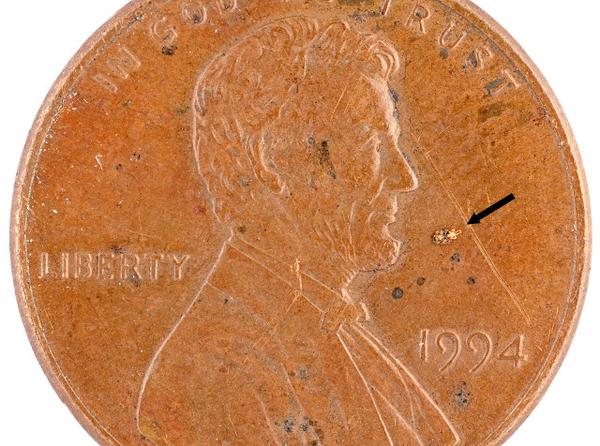Clover Mites in Turf
en Español / em Português
El inglés es el idioma de control de esta página. En la medida en que haya algún conflicto entre la traducción al inglés y la traducción, el inglés prevalece.
Al hacer clic en el enlace de traducción se activa un servicio de traducción gratuito para convertir la página al español. Al igual que con cualquier traducción por Internet, la conversión no es sensible al contexto y puede que no traduzca el texto en su significado original. NC State Extension no garantiza la exactitud del texto traducido. Por favor, tenga en cuenta que algunas aplicaciones y/o servicios pueden no funcionar como se espera cuando se traducen.
Português
Inglês é o idioma de controle desta página. Na medida que haja algum conflito entre o texto original em Inglês e a tradução, o Inglês prevalece.
Ao clicar no link de tradução, um serviço gratuito de tradução será ativado para converter a página para o Português. Como em qualquer tradução pela internet, a conversão não é sensivel ao contexto e pode não ocorrer a tradução para o significado orginal. O serviço de Extensão da Carolina do Norte (NC State Extension) não garante a exatidão do texto traduzido. Por favor, observe que algumas funções ou serviços podem não funcionar como esperado após a tradução.
English
English is the controlling language of this page. To the extent there is any conflict between the English text and the translation, English controls.
Clicking on the translation link activates a free translation service to convert the page to Spanish. As with any Internet translation, the conversion is not context-sensitive and may not translate the text to its original meaning. NC State Extension does not guarantee the accuracy of the translated text. Please note that some applications and/or services may not function as expected when translated.
Collapse ▲Description
Clover mites are small, red, orange-brown or dark green mites with a round body and eight legs (Figure 1). They are larger than other common mite species (two-spotted spider mite) and can be easily seen by the human eye (Figure 2). The front pair of legs are as long, or longer than, the length of its body and can sometimes look like antennae the way they are held along the head capsule, in front of the body. Immature stages are very bright red and are easily noticed. Clover mites are more often an annoyance in northern states, but have been noted as a pest in different parts of North Carolina during certain years.
Pest Status
Clover mites can infest homes and buildings in the fall and late spring/early summer but are typically more of problem from April through mid-June. They do not cause any structural damage but can be unsightly when they appear in large numbers and will leave behind a red-brown smear stain when physically removed from a surface. They can survive on a number of plants but typically inhabit grasses and weeds and so are often more of a problem on the side of a building facing a well-maintained or densely planted lawn. They are generally more prevalent in areas with direct sunlight.
Biology
Female mites lay about 70 unfertilized eggs each in late spring and hatch and become active when temperatures are between 50° and 75° F. Females will continue to lay eggs until temperatures regularly exceed 85 degrees F, at which time, they will lay eggs that will not hatch until cooler temperatures return. Mite populations undergo two or more generations each season while moderate temperatures last.
Damage
Clover mites are more of a problem new lawns and lawns that have been heavily fertilized. They may also become a problem during a period of drought as they become more mobile as the turf dries. Direct damage to the turf is almost unnoticeable, but may appear as tiny, feeding spots on the blade surface.
Control
Cultural Control
Preventing clover mites from entering a home or building can be accomplished by caulking and weather-stripping around windows, doors and cracks, particularly on surfaces near managed turf. If mite infestations are severe, remove all plant material around the building, leaving a bare strip about two feet wide as mites do not like to cross patches of bare, loose soil.
Biological Control
No biological control option
Chemical Control
Chemical control is usually not required but if clover mites become a routine problem, treat the lower three feet of foundation, and possibly a six to ten feet perimeter on the surrounding lawn, to prevent mites from entering a building. Recommendations for insecticides approved for use either indoors or outdoors can be found in CONTROL OF HOUSEHOLD PESTS in the NC Agricultural Chemicals Manual.
References
- Clover Mites, Bryobia praetiosa. Jacobs, S., Sr. 2014 (reviewed). 2014 (reviewed). Insect Advice from Extension, PennState College of Agricultural Sciences, Dept. of Entomology.
- 2018 Pest Control for Professional Turfgrass Managers. Bowman, D. et al. 2017. NC State Extension Publication AG-408. 81 pp.
- Extension Plant Pathology Publications and Factsheets
- Horticultural Science Publications
- North Carolina Agricultural Chemicals Manual
For assistance with a specific problem, contact your local Cooperative Extension Center




